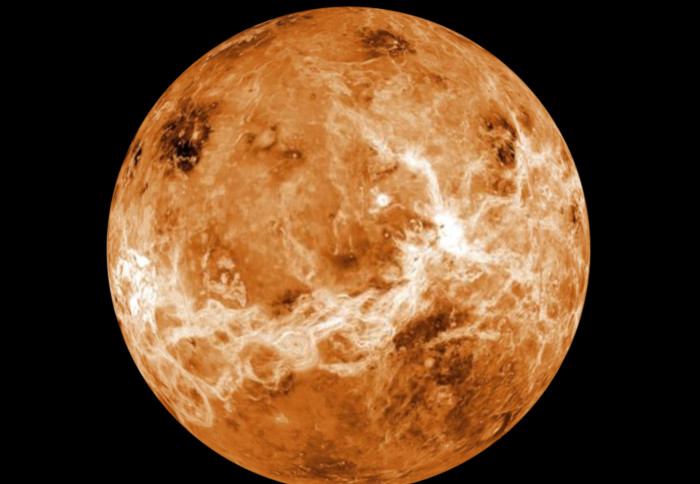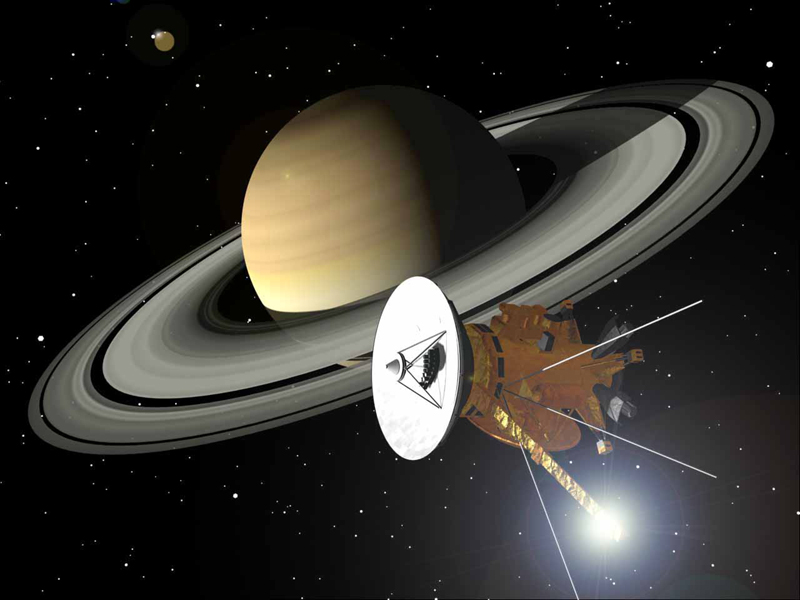Who Discovered Neptune

Neptune, the Solar System's most distant planet, size compared to Earth (Image credit: NASA)(Universe Today)
Neptune is the planet discovered mathematically, and whose detection led to a heated rivalry between British and French astronomers. But who was the first person actually to see Neptune?
It all started with Uranus
The five planets visible to the unaided eye have been known for thousands of years, with Saturn being the edge of the known Solar System. Then in 1781 William Herschel discovered Uranus. The new planet was so distant that it doubled the radius of the known Solar System.
As the years went by, astronomers observed that the orbit of Uranus wasn't as expected. Perhaps the deviation was caused by the gravitational effect of an undiscovered planet? Independently, Britain's John Couch Adams and France's Urbain Le Verrier did calculations and suggested where such a planet might be.
The discovery
Le Verrier couldn't get French astronomers to hunt for the planet, so in 1846 he sent his calculations to Johann Gottfried Galle at the Berlin Observatory. Galle and his assistant Heinrich Louis d'Arrest found the planet on the first night they searched, September 23, 1846.
Some prominent British astronomers then raised the matter of Adams's calculations, saying that he should be given credit as a co-discoverer. In addition, James Challis of the Cambridge Observatory realized that he had seen Neptune twice in August of that year. However, unlike the Berlin Observatory, Cambridge didn't have an up-to-date star map, so Challis didn't recognize what he'd seen.
I won't go into the politics of the discovery and its aftermath, but will note that Le Verrier and Adams showed the utmost respect for each other, and Adams conceded the discovery to Le Verrier. But there remains an interesting question: Who was the first person to see Neptune? Was Challis the only one who recorded it as a faint star?
Like father, not like son
John Herschel was the son of William Herschel and a prominent scientist in his own right. He was observing on July 14, 1830 when he saw Neptune. However he had thought it was a star and took no particular notice of it. It was only sixteen years later, after Neptune's discovery, that he realized what he'd seen.
It was a reasonable oversight. You can't see Neptune without a telescope. Even with a small telescope it would appear as a point of light just like a star. But Herschel had been close to accomplishing a family double. His telescope was good enough to show Neptune's disk if he'd had a reason to examine it closely. That would have made a good story.
Jérôme Lalande
Among the many accomplishments of French astronomer Lalande (1732-1807) were his tables of planetary positions, the most accurate available until the nineteenth century. But he missed the eighth planet, even though Neptune – an apparent star – was recorded twice in May 1795 by Lalande's staff at the Paris Observatory.
Galileo
Following the invention of the telescope, one of the very first people that could have seen Neptune apparently did see it. However Galileo's telescope wasn't powerful enough to show Neptune's planetary disk.
Galileo discovered that planets other than our own could have satellites. He was fascinated by the miniature solar system of Jupiter and its four main moons. He observed them on three nights in December/January 1612/13 when Jupiter and Neptune were in conjunction. In a conjunction, two heavenly bodies appear close together in the sky. Neptune is shown as a background star in Galileo's notes.
Since Galileo didn't know what he was seeing four hundred years ago, how can we be so sure of it? Planetarium software can show the sky at a particular place at a given time. That means there's something to compare with Galileo's dated sketches.
Here is Galileo's sketch from the night of December 27, 1612, with Jupiter and its moons and a "background star". Comparing it with the image Starry Night software generates, we see that the "star" is Neptune.
About a month later, Galileo twice saw Neptune. He recorded it in his notes, and again the sketches are matched by the software images. This time he thought he was seeing two stars, but one of them was Neptune. On the second night he noted that the stars seemed to be farther apart, but he didn't follow up this observation. I suspect that despite all the wondrous things he'd seen, it didn't occur to him that there might be new planets out there. Even over a century and a half later William Herschel assumed he was looking at a comet when he saw Uranus.
So close
Born in Scotland, Johann von Lamont (1805-1879) lived most of his life in Germany where he had a distinguished career. Among other things, he determined the orbits of the moons of Saturn and Uranus, and surveyed Earth's magnetic field. Interestingly, he recorded Neptune on at least three occasions, two of them in September 1846, not long before Neptune's discovery was announced. Despite being an experienced observer and author of an important star catalog, he didn't note the motion of this "star" over several days. Otherwise he might have discovered a planet.
So although Galle and Le Verrier discovered Neptune, there were sightings before that. No worldwide fame attended the early sightings, but they were useful in determining the orbit of the new planet.
Reference:
Gaherty, G, “Cosmic Quest: Who Really Discovered Neptune?” https://www.space.com/26972-neptune-planet-discovery-skywatching.html
Neptune is the planet discovered mathematically, and whose detection led to a heated rivalry between British and French astronomers. But who was the first person actually to see Neptune?
It all started with Uranus
The five planets visible to the unaided eye have been known for thousands of years, with Saturn being the edge of the known Solar System. Then in 1781 William Herschel discovered Uranus. The new planet was so distant that it doubled the radius of the known Solar System.
As the years went by, astronomers observed that the orbit of Uranus wasn't as expected. Perhaps the deviation was caused by the gravitational effect of an undiscovered planet? Independently, Britain's John Couch Adams and France's Urbain Le Verrier did calculations and suggested where such a planet might be.
The discovery
Le Verrier couldn't get French astronomers to hunt for the planet, so in 1846 he sent his calculations to Johann Gottfried Galle at the Berlin Observatory. Galle and his assistant Heinrich Louis d'Arrest found the planet on the first night they searched, September 23, 1846.
Some prominent British astronomers then raised the matter of Adams's calculations, saying that he should be given credit as a co-discoverer. In addition, James Challis of the Cambridge Observatory realized that he had seen Neptune twice in August of that year. However, unlike the Berlin Observatory, Cambridge didn't have an up-to-date star map, so Challis didn't recognize what he'd seen.
I won't go into the politics of the discovery and its aftermath, but will note that Le Verrier and Adams showed the utmost respect for each other, and Adams conceded the discovery to Le Verrier. But there remains an interesting question: Who was the first person to see Neptune? Was Challis the only one who recorded it as a faint star?
Like father, not like son
John Herschel was the son of William Herschel and a prominent scientist in his own right. He was observing on July 14, 1830 when he saw Neptune. However he had thought it was a star and took no particular notice of it. It was only sixteen years later, after Neptune's discovery, that he realized what he'd seen.
It was a reasonable oversight. You can't see Neptune without a telescope. Even with a small telescope it would appear as a point of light just like a star. But Herschel had been close to accomplishing a family double. His telescope was good enough to show Neptune's disk if he'd had a reason to examine it closely. That would have made a good story.
Jérôme Lalande
Among the many accomplishments of French astronomer Lalande (1732-1807) were his tables of planetary positions, the most accurate available until the nineteenth century. But he missed the eighth planet, even though Neptune – an apparent star – was recorded twice in May 1795 by Lalande's staff at the Paris Observatory.
Galileo
Following the invention of the telescope, one of the very first people that could have seen Neptune apparently did see it. However Galileo's telescope wasn't powerful enough to show Neptune's planetary disk.
Galileo discovered that planets other than our own could have satellites. He was fascinated by the miniature solar system of Jupiter and its four main moons. He observed them on three nights in December/January 1612/13 when Jupiter and Neptune were in conjunction. In a conjunction, two heavenly bodies appear close together in the sky. Neptune is shown as a background star in Galileo's notes.
Since Galileo didn't know what he was seeing four hundred years ago, how can we be so sure of it? Planetarium software can show the sky at a particular place at a given time. That means there's something to compare with Galileo's dated sketches.
Here is Galileo's sketch from the night of December 27, 1612, with Jupiter and its moons and a "background star". Comparing it with the image Starry Night software generates, we see that the "star" is Neptune.
About a month later, Galileo twice saw Neptune. He recorded it in his notes, and again the sketches are matched by the software images. This time he thought he was seeing two stars, but one of them was Neptune. On the second night he noted that the stars seemed to be farther apart, but he didn't follow up this observation. I suspect that despite all the wondrous things he'd seen, it didn't occur to him that there might be new planets out there. Even over a century and a half later William Herschel assumed he was looking at a comet when he saw Uranus.
So close
Born in Scotland, Johann von Lamont (1805-1879) lived most of his life in Germany where he had a distinguished career. Among other things, he determined the orbits of the moons of Saturn and Uranus, and surveyed Earth's magnetic field. Interestingly, he recorded Neptune on at least three occasions, two of them in September 1846, not long before Neptune's discovery was announced. Despite being an experienced observer and author of an important star catalog, he didn't note the motion of this "star" over several days. Otherwise he might have discovered a planet.
So although Galle and Le Verrier discovered Neptune, there were sightings before that. No worldwide fame attended the early sightings, but they were useful in determining the orbit of the new planet.
Reference:
Gaherty, G, “Cosmic Quest: Who Really Discovered Neptune?” https://www.space.com/26972-neptune-planet-discovery-skywatching.html
You Should Also Read:
John Herschel
Uranus and Neptune - Twin Planets
Pluto Is a Dwarf Planet

Related Articles
Editor's Picks Articles
Top Ten Articles
Previous Features
Site Map
Content copyright © 2023 by Mona Evans. All rights reserved.
This content was written by Mona Evans. If you wish to use this content in any manner, you need written permission. Contact Mona Evans for details.







